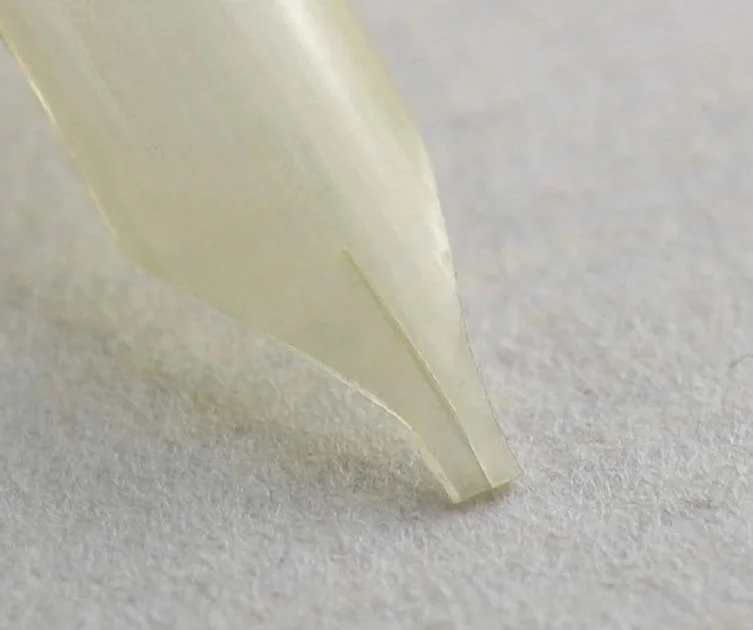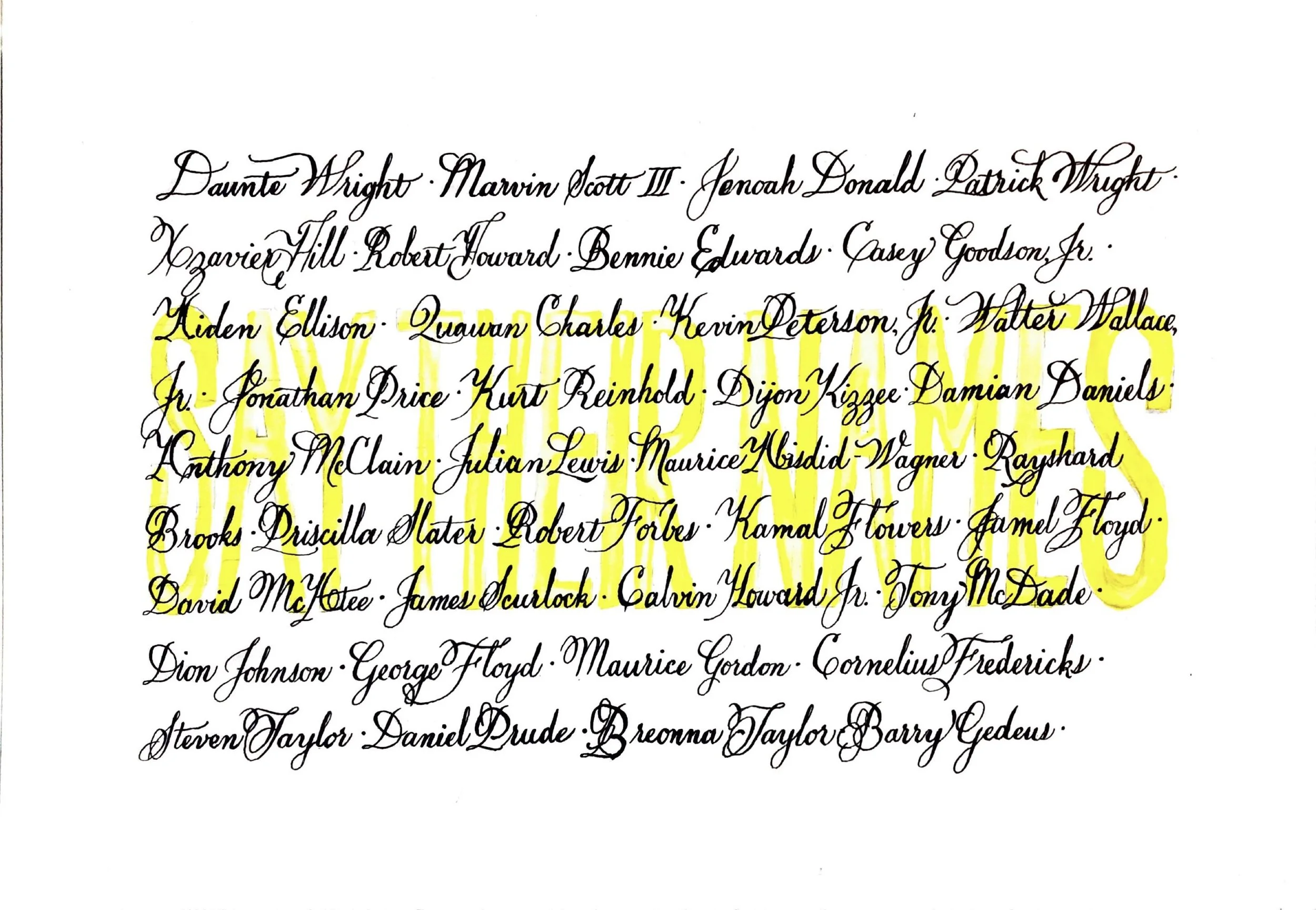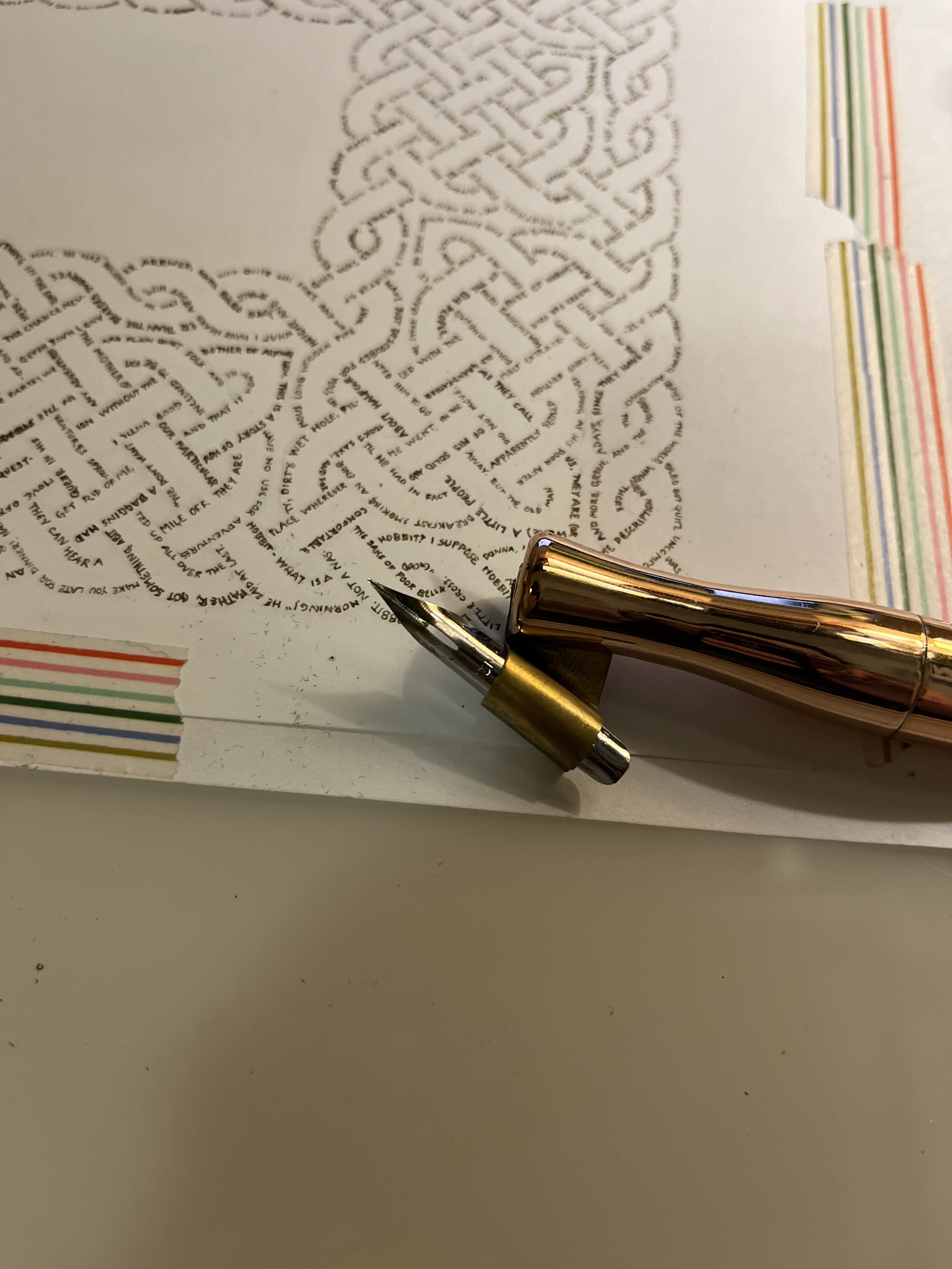Calligraphy
& Painting
Currently available for commission, contract, or freelance work.
Questions about calligraphy? Calligraphy explainer »
Categories
~
Pen (n.1), late 13th c. penne "writing implement made from a feather" > Lat. penna "feather, plume" > Old Lat. petna, pesna > Proto-Indo-European root *pet- "to rush; to fly" (etymonline.com)
~ Pen (n.1), late 13th c. penne "writing implement made from a feather" > Lat. penna "feather, plume" > Old Lat. petna, pesna > Proto-Indo-European root *pet- "to rush; to fly" (etymonline.com)
A word about font
Technically, it’s incorrect to refer to calligraphy using the word “font”, since etymologically speaking it refers to print technology—i.e., the literal metal letter stamps, cast in an iron foundry, which would be set by a typesetter to print text. This is also why the word “font” refers to both the size and shape of a given set of letters; we often use the word “font” to mean “typeface”.
In calligraphy, the different “fonts” are called “hands”.
Pointed vs. Broad Edge Pen—what’s the difference?
The first pens in Europe were made of feathers, cut to rigid, flat points. The Islamic world used reed or bamboo to create a similar shape. The size, or width, of the nib (tip) remains constant throughout writing, which generates shapes in direct and consistent proportion to one another, which a scribe can assemble into letters.
Then, in the seventeenth century, advances in metal manufacturing in Europe allowed for the production of a new type of flexible, “pointed” nib. With these new nibs, the two tines would flex wider apart with pressure and spring back together on release, making the effective width of the nib changeable throughout a given stroke. This allowed for a more brush-like, organic generation of shapes much more conducive to cursive or “running” writing styles.
So, what do these hands actually look like?
Great question!
Broad-edge styles are characterized by geometric shapes and consistent proportions. Like wines, cheeses, and many things Europe, some styles are strongly associated with a certain country or area.
Pointed pen styles have a “looser” look characterized by thin upstrokes and thick downstrokes, and look in general like what we think of as “cursive”.
Here’s a quick sampler:
Broad Edge Styles
(Arranged roughly from oldest to newest)
Carolingian minuscule
Insular/half-uncial (Irish)
Gothic Textura Quadrata (Germanic)
Bastard Secretary (bâtarde if you’re fancy)
Humanist/Foundational (Italic)
Pointed Pen Styles
Copperplate
flourishing (not a hand, just a technique)
Copperplate
Copperplate
Micrography (also technically not a hand, but a technique or even a whole other category of art in and of itself)



















